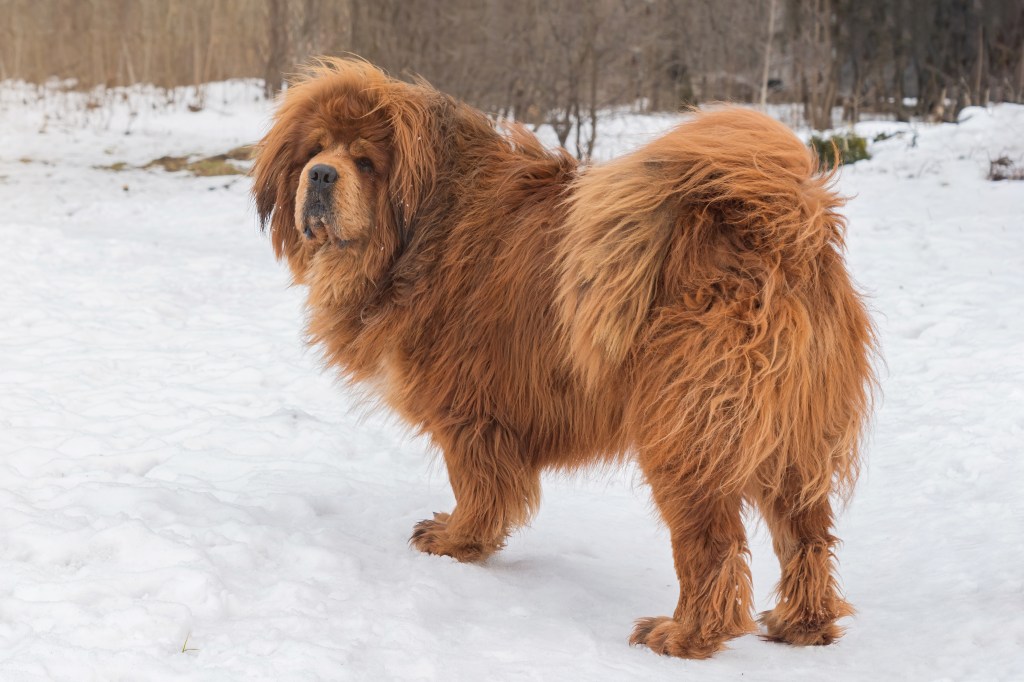Renowned for Its Massive Size, Thick Coat, and Fiercely Protective Nature
The Tibetan Mastiff is a majestic and powerful dog breed. It has captivated dog enthusiasts worldwide. Known for its massive size, thick coat, and fiercely protective nature, this breed originates from the remote Himalayan regions. For thousands of years, it has played a vital role in the lives of Tibetan people. Its history is deeply tied to Tibetan culture, spirituality, and the rugged landscapes it once roamed.
This exploration delves into the origins and history of the Tibetan Mastiff. We will trace its journey from an ancient protector of nomads and monasteries to a prized companion in the modern world.
Ancient Origins of the Tibetan Mastiff
The Tibetan Mastiff, or Do-Khyi, is an ancient breed. Experts believe it has existed for thousands of years, possibly as far back as 1100 BCE. Many consider it one of the foundational breeds for modern large working dogs.
The exact timeline of its origin remains unclear due to Tibet’s isolation and the lack of written records. However, genetic evidence and historical accounts suggest Tibetan Mastiffs have been part of Central Asian culture for millennia.
In their earliest form, these dogs guarded nomadic herders and monks. They protected flocks of sheep, yak, and other livestock from predators like wolves, snow leopards, and bears. The harsh Himalayan environment required the dogs to be strong, resilient, and highly independent. These traits helped shape the breed’s robust and hardy nature.
Tibetan Mastiffs also guarded monasteries and homes. They ensured the safety of both property and people. In Tibetan Buddhist culture, people viewed dogs as spiritual protectors. They believed the dogs could ward off evil spirits. The Tibetan Mastiff’s imposing presence and deep, resounding bark likely reinforced this belief.
The Role of the Tibetan Mastiff in Tibetan Society
Tibetan Mastiffs were rarely found in villages or lowland areas. They primarily lived with nomadic tribes and high-altitude monasteries. During the day, the dogs roamed freely, patrolling the land and watching over livestock. At night, their owners often chained them to keep them close for protection.
This dual existence—operating both independently and alongside humans—helped develop the breed’s independence, intelligence, and loyalty.
Tibetan Mastiffs were more than just working dogs. They held cultural significance, especially among the nobility and monastic leaders. Wealthy families often gifted these dogs to visiting dignitaries or political allies. This practice highlighted the breed’s role as a status symbol.
In Tibetan Buddhism, people revered the Tibetan Mastiff for its protective and almost divine qualities. Its association with monasteries further elevated its status as a sacred animal connected to the spiritual world.

The Tibetan Mastiff in Western History
The Western world first encountered the Tibetan Mastiff in the early 19th century. However, its rarity and remote origins made it a curiosity rather than a widespread breed.
One of the earliest records dates back to 1847. Lord Hardinge, the British Viceroy of India, gifted a Tibetan Mastiff to Queen Victoria. The dog caused a sensation in British aristocratic circles. Yet, it took many decades for the breed to gain traction outside Asia.
Prince Heinrich of Germany also played a role in introducing the breed to Europe. In the late 19th century, he imported several Tibetan Mastiffs. Despite these efforts, the breed remained largely confined to its native lands for most of the 20th century.
Interest in the breed grew in the 1970s. Western breeders began importing Tibetan Mastiffs from Nepal, India, and Tibet. Formal breeding programs helped preserve and promote the breed internationally. However, its aloof and independent temperament limited its popularity compared to more social breeds.
Modern Tibetan Mastiffs
Today, the Tibetan Mastiff has a niche following among dog enthusiasts. People admire its ancient lineage, dignified appearance, and guardian instincts. The breed excels as a family protector when properly trained and socialized.
However, Tibetan Mastiffs are not easy to own. Their independence, occasional stubbornness, and strong protective instincts make them challenging, especially for novice dog owners.
In recent years, the breed has gained significant attention in China. Some view it as a status symbol, with certain dogs selling for hundreds of thousands or even millions of dollars. This demand has led to a breeding boom, raising concerns about overbreeding and animal welfare.
Despite modern developments, the Tibetan Mastiff retains many of its traditional traits. Its imposing size, intelligence, and loyalty continue to inspire admiration. Its deep connection to Tibetan history and culture adds to its enduring mystique.
Conclusion
The Tibetan Mastiff is more than just a dog. It is a symbol of the ancient and mysterious land of Tibet. For thousands of years, it guarded the flocks and monasteries of the Himalayas. Its fierce loyalty, independence, and protective instincts reflect the rugged environment and spiritual heritage of its homeland.
Today, people worldwide admire the Tibetan Mastiff for its majestic presence. However, its history remains a testament to its essential role in protecting the people, livestock, and traditions of Tibet.


